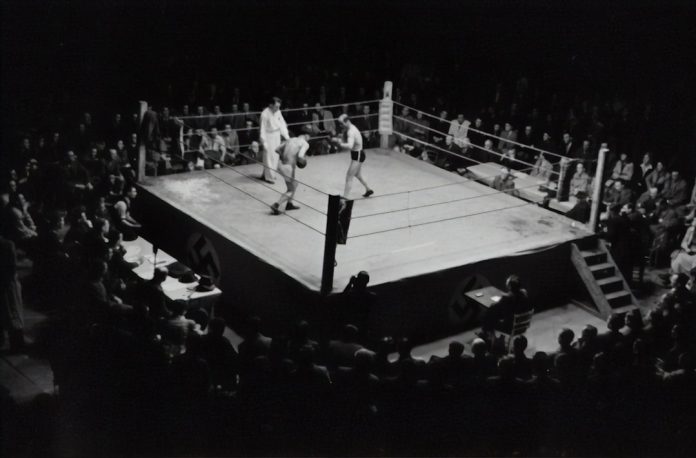Sports cards have been a beloved pastime for collectors and sports enthusiasts for decades. These small pieces of cardboard hold a significant place in the world of sports, capturing the essence of athletes and their achievements. Over the years, sports cards have evolved from simple tobacco inserts to highly sought-after collectibles that hold immense value. In this article, we will explore the history and evolution of sports cards, from their early days to the modern era, and discuss their importance in the world of sports.
Early Days: Tobacco Inserts and Caramel Cards
The first sports cards can be traced back to the late 19th century when tobacco companies began inserting small cards into their cigarette packs as a way to promote their products. These early cards featured various subjects, including athletes, and quickly gained popularity among collectors. The most notable early sports cards were the tobacco inserts, which were often printed on thin cardboard and featured black-and-white images of baseball players.
During the same period, caramel companies also jumped on the sports card bandwagon. These caramel cards were typically included in packages of caramel candy and featured colorful illustrations of athletes. They were often larger in size compared to tobacco inserts and had a more vibrant appearance. Caramel cards became highly collectible and are still sought after by collectors today.
The Golden Age: Baseball Cards Take Over
The emergence of baseball as America’s favorite pastime in the early 20th century led to a surge in popularity for baseball cards. The most iconic baseball card from this era is undoubtedly the T206 Honus Wagner card. Honus Wagner, a legendary shortstop for the Pittsburgh Pirates, had his card pulled from production due to a dispute with the American Tobacco Company. Today, the T206 Honus Wagner card is considered one of the most valuable and sought-after sports cards in existence.
As baseball grew in popularity, so did the demand for baseball cards. Card manufacturers such as Topps, Bowman, and Fleer entered the scene, producing sets of baseball cards that featured not only the stars of the game but also up-and-coming rookies. These cards became a staple for collectors and played a significant role in the growth of the sports card industry.
Football Cards Enter the Game
While baseball cards dominated the sports card market for many years, football cards eventually made their mark. The introduction of football cards can be traced back to the 1940s when Bowman released its first set of football cards. However, it wasn’t until the 1960s that football cards gained widespread popularity.
One card that had a significant impact on the football card market was Joe Namath’s rookie card. Namath, a charismatic quarterback for the New York Jets, led his team to victory in Super Bowl III and became an instant icon. His rookie card became highly sought after by collectors and is still considered one of the most valuable football cards today.
With the rise of professional football and the increasing popularity of the NFL, football cards became a staple for collectors and fans alike. Today, football card collecting is a thriving hobby with a dedicated fan base.
Basketball Cards Shoot to Popularity
Basketball cards had a slower start compared to baseball and football cards but eventually shot to popularity in the 1980s. The emergence of basketball superstars like Magic Johnson and Larry Bird, followed by the arrival of Michael Jordan, propelled basketball cards into the spotlight.
Michael Jordan’s rookie card, released in 1986 by Fleer, is one of the most iconic sports cards of all time. Jordan’s dominance on the court and his global appeal made his rookie card highly sought after by collectors around the world. The demand for basketball cards skyrocketed, and manufacturers like Upper Deck and SkyBox entered the market to meet this growing demand.
Basketball card collecting continues to thrive today, with new stars like LeBron James and Zion Williamson capturing the attention of collectors. The growth of basketball card collecting has also extended beyond the United States, with international players like Dirk Nowitzki and Yao Ming gaining popularity among collectors worldwide.
The Global Appeal: Soccer Cards Gain Ground
While soccer has always been a popular sport globally, soccer cards didn’t gain significant traction until recent years. The rise of soccer cards can be attributed to the increased popularity of the sport in the United States and the emergence of global superstars like Lionel Messi and Cristiano Ronaldo.
Messi and Ronaldo’s impact on the soccer card market cannot be overstated. Their incredible skills on the field, numerous accolades, and massive fan bases have made their cards highly sought after by collectors worldwide. The demand for soccer cards has grown exponentially, leading to the production of more sets and the inclusion of players from various leagues around the world.
Soccer card collecting is still in its early stages compared to other sports, but it is steadily gaining ground. As the popularity of soccer continues to grow, so does the interest in soccer cards. Collectors are now looking beyond traditional sports like baseball and football, expanding their collections to include soccer cards from different eras and leagues.
The Icing on the Cake: Hockey Cards Freeze the Competition
Hockey cards may not have the same mainstream appeal as baseball or basketball cards, but they have a dedicated following among hockey fans and collectors. The emergence of hockey cards can be traced back to the 1910s when tobacco companies began including hockey players in their sets.
One card that had a significant impact on the hockey card market was Wayne Gretzky’s rookie card. Gretzky, often referred to as “The Great One,” is considered one of the greatest hockey players of all time. His rookie card, released in 1979 by Topps, is highly coveted by collectors and holds immense value.
Hockey card collecting has a strong presence in Canada, where hockey is the national sport. The growth of the NHL and the popularity of players like Sidney Crosby and Alexander Ovechkin have further fueled interest in hockey cards. While hockey cards may not have the same widespread appeal as other sports, they hold a special place in the hearts of hockey fans and collectors.
The Modern Era: Technology and Innovation
The sports card industry has undergone significant changes in recent years, thanks to advancements in technology and innovation. The impact of technology on sports cards can be seen in various aspects, from card design to distribution and trading.
One notable development is the rise of digital cards. Digital cards, also known as NFTs (non-fungible tokens), are unique digital assets that can be bought, sold, and traded on blockchain platforms. These digital cards have gained popularity among collectors who are looking for a new way to own and showcase their collections. Digital cards offer unique features such as interactive elements, limited editions, and the ability to verify authenticity.
Another significant change brought about by technology is the growth of online marketplaces. Collectors no longer have to rely solely on physical card shops or trade shows to buy and sell cards. Online platforms like eBay, COMC (Check Out My Cards), and StockX have made it easier for collectors to connect with buyers and sellers from around the world. These online marketplaces have also opened up opportunities for collectors to find rare and hard-to-find cards that may not be available locally.
The Business of Collecting: Grading, Investing, and Trading
As sports cards have become more valuable and sought after, various aspects of the hobby have evolved to meet the demands of collectors. One important aspect is card grading. Card grading involves assessing the condition of a card and assigning it a grade based on a set of criteria. Graded cards are sealed in protective cases and are highly valued by collectors due to their authenticity and condition.
Professional grading companies like PSA (Professional Sports Authenticator) and Beckett Grading Services have become trusted authorities in the sports card industry. Their grading services provide collectors with a standardized way to evaluate the condition of their cards and determine their value. Graded cards often command higher prices in the market, making them attractive options for collectors and investors.
Speaking of investing, sports cards have become a popular alternative investment option in recent years. With the rise in card values and the increased interest from investors, many collectors have started viewing their collections as potential financial assets. Card investing involves researching and identifying cards with potential for growth in value, buying them at a reasonable price, and holding onto them for future appreciation.
Card trading has also evolved with the advent of online platforms and social media communities. Collectors can now connect with each other through forums, Facebook groups, and dedicated trading platforms. These platforms provide a space for collectors to showcase their collections, discuss trends, and trade cards with fellow enthusiasts. The growth of card trading has fostered a sense of community among collectors and has made it easier for individuals to find specific cards they are looking for.
The Future of Sports Cards: Trends and Predictions
The sports card industry has experienced significant growth in recent years, but what does the future hold? Several trends and predictions can be made based on current developments and market dynamics.
The COVID-19 pandemic had a profound impact on the sports card industry. With live sports events canceled or postponed, collectors turned to their collections as a source of entertainment and investment. The demand for sports cards surged during this time, leading to increased prices and limited supply. While the pandemic may have accelerated certain trends in the industry, it remains to be seen how the market will stabilize once live sports events resume.
One trend that is likely to continue is the growth of niche sports cards. While baseball, football, basketball, and soccer cards dominate the market, collectors are starting to explore cards from other sports and lesser-known athletes. Niche sports like golf, tennis, and MMA (mixed martial arts) have their own dedicated fan bases, and as interest in these sports grows, so does the demand for their respective cards.
The future of sports cards also lies in the digital realm. Digital cards have gained traction in recent years, and their popularity is likely to continue to grow. The ability to own and trade unique digital assets appeals to a new generation of collectors who are more digitally inclined. As technology continues to advance, we can expect to see more innovative features and functionalities in digital cards.
Conclusion: The Future of Sports Cards
In conclusion, sports cards have come a long way since their humble beginnings as tobacco inserts and caramel cards. They have evolved into highly sought-after collectibles that hold immense value and capture the essence of athletes and their achievements. From baseball to football, basketball to soccer, and hockey to niche sports, sports cards have played a significant role in the world of sports.
The future of sports cards looks promising, with advancements in technology and innovation shaping the industry. Digital cards and online marketplaces have opened up new possibilities for collectors, while card grading, investing, and trading have become integral parts of the hobby. As the world continues to change, so will the sports card industry. However, one thing remains constant: the importance of sports cards in preserving the history and legacy of athletes for generations to come.
If you’re interested in expanding your sports card collection, you might want to check out “Score Big with Sports Card Collecting: A Beginner’s Guide to Unearthing Valuable Gems.” This informative article from Breakaway Cards provides valuable tips and insights for beginners looking to dive into the world of sports card collecting. From understanding the market value of cards to identifying rare and valuable finds, this guide is a must-read for any aspiring collector. So, whether you’re a seasoned collector or just starting out, be sure to give this article a read and take your sports card collection to the next level.



